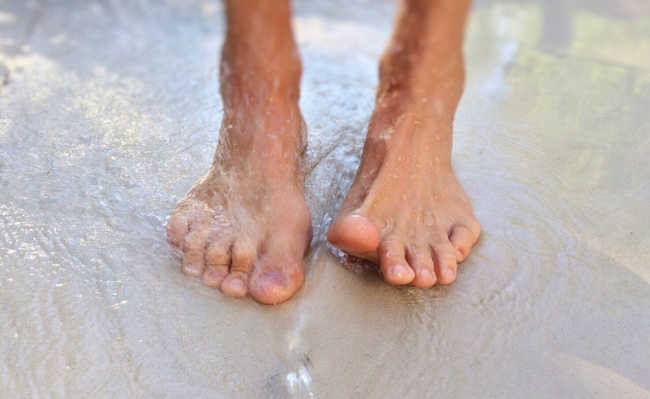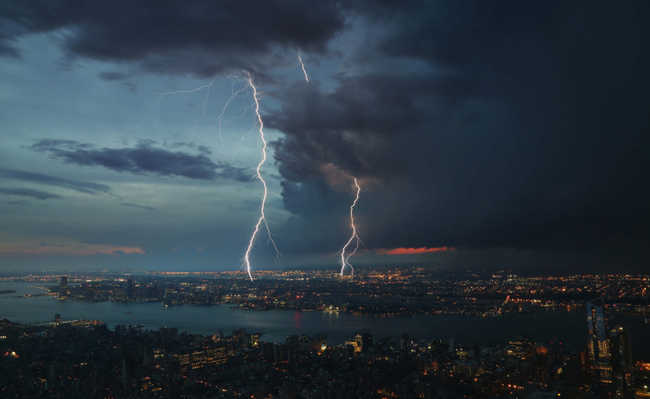What are flying rivers?
Flying rivers take shape in the Amazon and influence the climate of several Brazilian states

Flying rivers are volumes of water vapor that come from the Atlantic Ocean (near the equator line), fall as rain in the Amazon - where they gain body - and follow to the Andes, meeting the mountain barrier present in this region, which it deflects and floats over Bolivia, Paraguay and the Brazilian states of Mato Grosso, Mato Grosso do Sul, Minas Gerais and São Paulo; sometimes reaching Paraná, Santa Catarina and Rio Grande do Sul.
- What is the Legal Amazon?
Most of the water vapor in flying rivers comes from the ocean, from where it is transported to the mainland by the trade winds, which blow from east to west; and from there, after arriving in the Andes, to the south.

Aerial photograph of a small part of the Brazilian Amazon near Manaus, Amazonas Edited and resized image by Neil Palmer, available on Flickr and licensed under CC BY-SA 2.0
Flying rivers are about three kilometers high, a few hundred wide, and thousands long. This means that, on some days of the year, a river the size of the Amazon crosses the skies of Brazil.
- What is blue amazon?
Understand the flying rivers in an illustrated way in the following image:

Edited and resized image from Amazônia Real
However, flying rivers have no banks, no fish, no wings to fly. The expression is just metaphorical. Flying rivers are technically called "low-level jets".
Meteorology and hydrology experts have known about flying rivers since the early 1960s, but the origin of the vapors and how they interact with the planet's surface or help form giant clouds - which rise 15 kilometers above the sea. soil - were only discovered later.
- Water cycle: what it is and how it occurs in nature
They found that flying rivers undergo changes as they pass over Brazil. As it passes through the Amazon rainforest, it incorporates water that evaporates directly from the soil and plants, causing part of the Amazon's moisture to reach the south of the country and possibly turn into rain.
- Amazon forest: what it is and its characteristics
How Flying Rivers Were Studied
To be analyzed, the flying rivers required a multidisciplinary team of scientists. Twelve flights were made over different regions of the country to collect water vapor samples that condensed in a tube cooled by dry ice.
In one of these flights, under favorable weather conditions, the flying river that runs through the Amazon to São Paulo was analyzed. It was calculated that, in a given stretch, the amount of water flowing is 3,200 cubic meters per second, which is greater than the flow of the São Francisco River - one of the main water courses in Brazil. All the water carried by this air current in 24 hours is equivalent to 115 days of water consumption in the city of São Paulo, which has 12.11 million inhabitants. In less than two years, 500 water samples were collected from 500 to 2,000 meters above sea level.
Importance of flying rivers
Studies on flying rivers have shown that there is a clear collaboration of the moisture that evaporates from the Amazon to the rains in the South and Southeast. On the days that the flying river passes over the Amazon forest – this only happens on about 35 days a year – more humidity reaches the Midwest, Southeast and South, increasing the probability of rain.
When flying rivers pass over the Amazon, they increase, on average, 20% to 30% the humidity of the air in Ribeirão Preto, for example, increasing the potential for rainfall. Sometimes this increase in humidity can reach 60%.
Flying rivers and deforestation

Edited and resized image by Johny Goerend is available on Unsplash
There is great concern on the part of specialists in flying rivers about the consequences of deforestation in the Amazon. Without the forest, flying rivers from the ocean can reach the continent faster in two or three days and increase the risk of severe storms in the south of the country.
- Amazon deforestation: causes and how to fight it
Removing the forest would reduce rainfall in the Amazon by 15% to 30%, reduce rainfall in the South and in the La Plata basin, and increase extreme weather events in the same region.
Adapted from FAPESP Magazine








